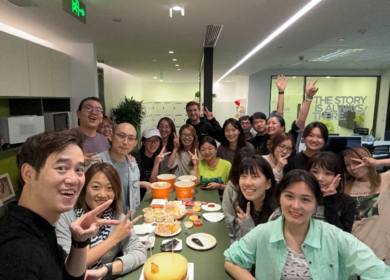By: Colby Reade, APR
The Hoffman Agency, Portland-Vancouver
Last week, Colby wrote a post about the use of first-person essays by individuals as powerful tools to connect with an audience. But how can professionals use this tool in their own working lives? Read below to find out.
The first-person essay can be a useful tool to connect individuals with their audiences — especially if they are trying to address an issue or express thoughts on a complicated situation. While this type of communication is not used frequently, it can be a useful method to express more than they can put in a Tweet or snippet from a reporter. However, if you’re going to use this method of communication, there are a few key factors to keep in mind:
- Let your authentic voice be heard — Through the editing process, it’s common in public relations for writing to get … diluted. While we at The Hoffman Agency believe in ditching corporate speak in favor of authentic language, preparing a piece for publication can easily lead to its sanitation. Little phrases and simple word choices can be nixed for more professional vocabulary. Don’t let this happen for your first-person essay. Don’t get me wrong, this is not a place for incorrect grammar or vulgarity, but let the piece read as though you were speaking.
It’s worth noting that in each of our examples, the subject dictated the content to a professional writer who, likely, was responsible for structure and grammar and not word choice and phrases. If you read the piece out loud and it does not sound like you, the person, were speaking, then the piece won’t resonate.
- Take responsibility — I believe that these types of essays are particularly helpful for sharing your side of an extended conflict, such as James’ four-year falling out with Cleveland. When you are discussing the history, accept your share of responsibility for when things go wrong. Arguably the biggest knock against Lyerla in his piece was that, while he did take some responsibility, he was quick to point the finger at others at every opportunity. This finger-pointing cost him some degrees of sympathy with his audience.
- Stick to facts — It’s likely that if you are sharing a first-person account, it’s related to a challenging issue or a crisis. It’s easy to get caught up in how the conflict made you feel as a person and, while it’s OK to share those emotions, it is important not to let the story become emotional. It’s not helpful at this stage in the game to point fingers, call names or bicker. Stick to the facts.
Work with the right outlet — Whether you are writing an essay that will be published directly or working with a reporter who may or may not give you final review of the piece being drafted*, it’s important that you carefully select the right publication with which to share your story. In each of the examples, our subjects worked with established publications that would reach their target audience and would share their own words directly.
- Pick your battles — Perhaps the most important piece of advice we can take from these examples is that these types of essays are most effective under significant circumstances. It is not appropriate or advisable to go around pitching a first-person essay every time something goes cock-eyed. If you feel the need to engage in that level of dialogue with your audience frequently, establish a blog. Focus on using this type of communication for situations that are complicated, that have drawn significant media attention or items that are widely reported with only a slim collection of the facts.
At its heart, true public relations is about facilitating a two-way dialogue between an organization, a brand or a person and the publics they serve. If you need to share your side of a complicated issue to better inform the publics you serve, but you don’t have a platform that’s appropriate from which to share, a first-person essay is an option to keep in mind.
*Note: If you are truly working on a “first-person essay” as opposed to providing an interview for a broader story, it is strongly recommended that you retain right of review prior to publication. Remember, this is a piece that should be coming from your voice.


